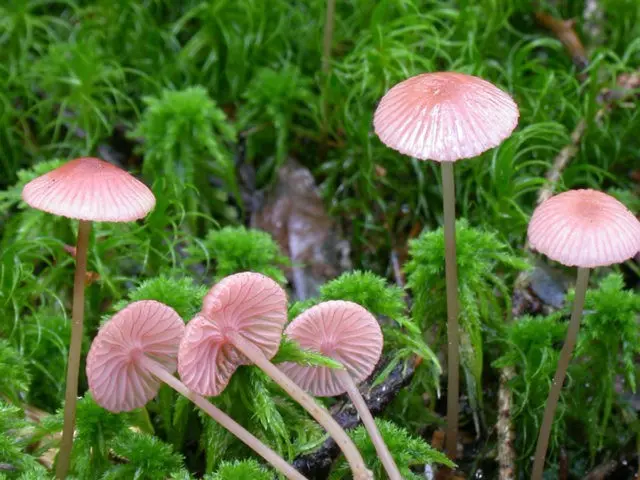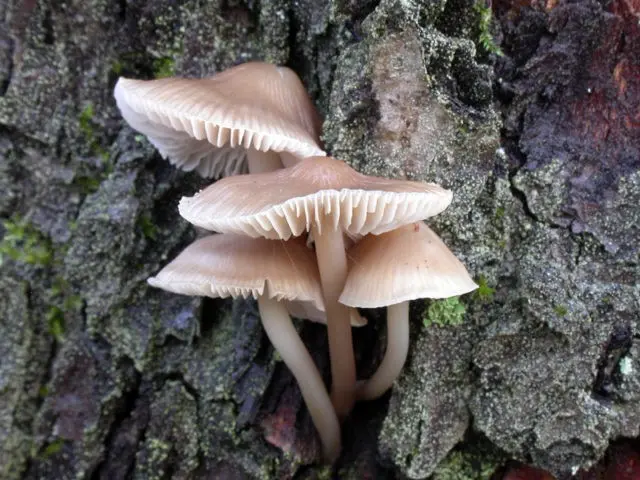Contents
Mycena blood-legged has a second name – red-legged mycena, outwardly very similar to a simple toadstool. However, the first option is not considered poisonous, in addition, one of the main differences of this specimen is the release of red-brown juice when broken.
What do mycenae bloodspins look like?
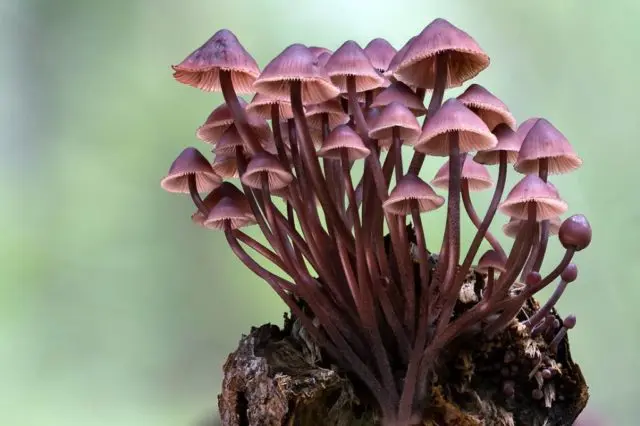
Mycena bloodleg is a small fungus with the following characteristics:
- head. The size in diameter is from 1 to 4 cm. The shape of a young specimen is in the form of a bell, with age it becomes almost prostrate, only a small tubercle remains in the middle. In youth, the skin of the cap is characterized as dry and dusty with a fine powder, while in older adults it is bald and sticky. The edges are slightly jagged, and the texture may be grooved or evened out. The color is gray-brown or dark brown with a reddish tint in the center, light at the edges. As a rule, adult specimens fade and become gray-pinkish or white.
- Records. On the inside of the cap are wide, but rare and narrowly adherent plates. When ripe, their color changes from white to pink, gray, pinkish gray, purple or reddish brown. As a rule, the edges of the plates are painted in the same color as the edges of the cap.
- Leg. Mycena blood-legged has a thin stem, 4 to 8 cm long and about 2-4 mm thick. Hollow inside, and smooth outside or may be covered with small pale red hairs. Depending on maturation, the color of the stem can be grayish, brown-red or purple. When pressed or broken, a red-brown juice is released.
- Pulp quite brittle, when damaged, it releases colored juice. Its color may be pale or similar to the shade of the hat.
- Spore powder white. Spores are amyloid, ellipsoidal, 7,5 – 9,0 x 4,0 – 5,5 microns.
Where do mycenae sanguinosae grow?
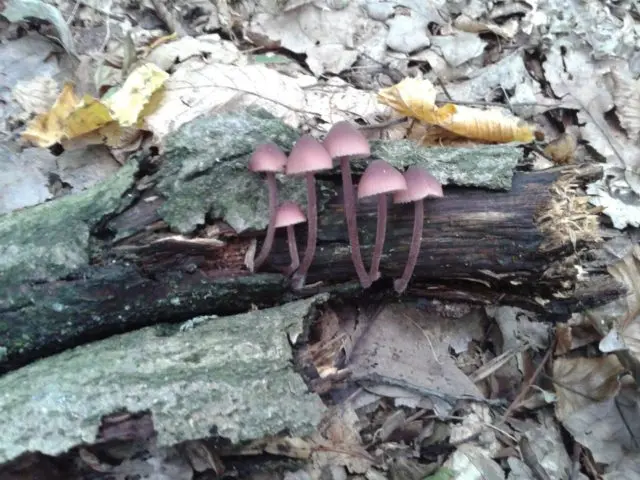
The optimal time for the growth of mycena sanguinea is the period from July to August. In countries with a warm climate, they can be found in winter. They are widely distributed in North America, Central Asia, Eastern and Western Europe. In addition, they are found in the European part of Our Country and the Primorsky Territory. They grow on old stumps, logs without bark, decaying hardwood trees, in rare cases on conifers.
Is it possible to eat mycenae sanguinea
They are not used for food.
The edibility of mycena bloodspin is considered a rather controversial issue, since opinions in different sources vary greatly. So, some publications classify this specimen as conditionally edible mushrooms, others – as inedible. A number of reference books indicate that mycena blood-legged is tasteless or has a barely noticeable bitter taste.
But almost all sources claim that this mushroom has no nutritional value. Despite the fact that this specimen is not poisonous, most experts do not recommend it for consumption.
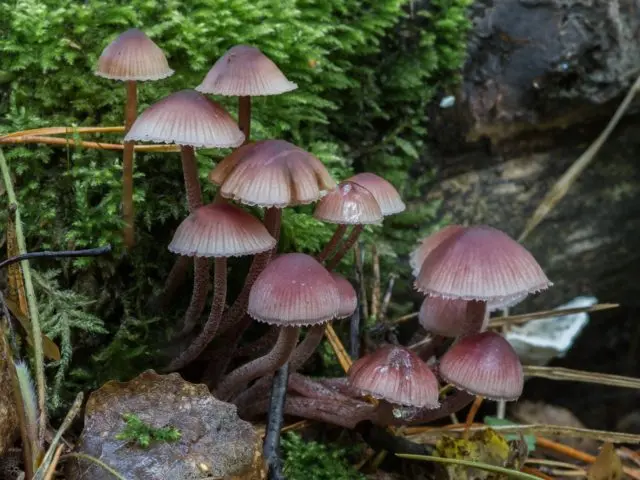
Similar species
Related species of mycena blood-legged include the following:
- Mycena bloody – has a cap size of 0,5 – 2 cm in diameter. It secretes a watery juice of red color, but in a smaller amount than the sanguineous. As a rule, it grows in coniferous forests. Due to its small size, it has no nutritional value, which is why it is classified as inedible.

- Mycena pink – the hat is similar in shape to the hat of mycena sanguinea. The color of the fruiting body is pink, does not secrete juice. Data on edibility is inconsistent.

- Mycena bell-shaped – refers to inedible mushrooms. The diameter of the cap varies from 1 to 6 cm, the length of the stem can reach 8 cm, and its diameter is 7 mm. As a rule, the cap is wrinkled in light brown shades, after a shower it becomes slimy. The plates are hard, branched, white or gray in color, becoming pink with age.

Conclusion
Mycena bloodleg is one of the few species that releases juice. It should be noted that the secreted liquid contains natural antibiotics that help to scare away and destroy various harmful parasites. The stem contains much more “bloody” juice than the cap. That is why this mushroom got the appropriate name.











